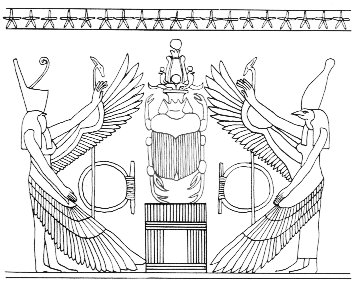Beyond the 'swiftly running' place (at the 5th banana
shoot named he nahoo) we could expect a new well-ordered year - because, we
will
remember, there
were 5 extracalendrical nights created by Thoth in
order to enable to Nut
give birth and likewise there were 5 days from February 9 to
the day of All Hearts.
5 days of birth + 19 (stars above) = 24, or rather 5
+ 19 * 5 = 100.
|
JUNE
7 (*78) |
8 |
9 |
10 (161) |
11 |
12 |
|
...
The month, which takes its name from
Juppiter the oak-god, begins on June
10th and ends of July 7th. Midway comes
St. John's Day, June 24th, the day on
which the oak-king was sacrificially
burned alive. The Celtic year was
divided into two halves with the second
half beginning in July, apparently after
a seven-day wake, or funeral feast, in
the oak-king's honour
... |
 |
 |
 |
 |
 |
 |
|
Ga3-19 (78 = 158 - 80) |
Ga3-20 |
Ga3-21 |
Ga3-22 |
Ga3-23 |
Ga3-24 |
|
The Knot (Ukdah) |
5 Imix 9 Kumk'u
Rishu A.-13 (Head of the Lion)
ψ Leonis (146.4),
RAS ELASET AUSTRALIS
= ε Leonis
(146.6)
*105.0 = *146.4 - *41.4 |
VATHORZ PRIOR = υ Carinae
(147.9) |
|
Star-25 (Horse) /
ANA-HEU-HEU-PO-5 (Pillar where debates
were held)
ALPHARD
(The Horse) =
α
Hydrae
(142.3),
ω
Leonis (142.6),
τ¹
Hydrae (142.7) |
Al Tarf-7 (The End)
ψ
Velorum (143.3),
ALTERF = λ Leonis,
τ²
Hydrae (143.4),
ξ
Leonis (143.5)
*102.0 = *143.4 - *41.4 |
A Hydrae
(144.1)
VEGA (α Lyrae) |
Creation of our present
world
UKDAH
(Knot)
= ι Hydrae
(145.4), κ Hydrae (145.5),
SUBRA = ο Leonis
(145.8)
*104.0 = *145.4 - *41.4 (= *288 - *184) |
|
Itzam-Yeh defeated |
28
May (148), 3149 BC |
|
1st
3-stone place |
21
May (141), 3114 BC |
|
Creation of our
present world |
13
August (225), 3114
BC |
|
Och ta chan
(Hun-Nal-Ye 'entered
or became the sky') |
5
February (36), 3112
BC |
|
21
May, 3114 BC - 5
February, 3112 BC =
542 |
|
542
'happens to be' the
sum of 365 days and
6 * 29½ nights. |

|
|
Aug 10 |
11 |
12 |
13
(225) |
14
(*146) |
15
(227 → π) |
|
°Aug
6 |
7 |
8
(220) |
9
(*141) |
10 |
11 |
|
'July
14 |
15 |
16 |
17
(*118) |
18 |
19
(200) |
|
SIRIUS |
"July 1 |
2 |
3
(*104) |
4 (185) |
Te Anakena 5 |
|
81 (=
158 - 77) |
82 |
83 |
84 |
85 =
185 - 100 |
86 =
227 - 141 |
|
...
Makoi replied, 'In Hiva the land belongs
to him - the land here is mine, not his
[tae oona]!'
They stayed (there longer). On the fifth
day of the month of July (Anakena),
they all got up, went downhill, went on,
and reached Hanga Te Pau. They
took their provisions with them,
carrying them on their shoulders, went
on, and reached Te Pou. They made
camp and slept in Te Pou on the
tenth of the month of July (Anakena).
Then they all got up, carried their
provision on their shoulders, went
straight ahead, and followed the path of
the dream soul of Hau Maka. They
came to Hua Reva and said, This
is Hua Reva A Hau Maka!...
[E:21-22] |
|
CLOSE
TO THE FULL MOON: |
|
DEC 7 |
8 |
9 |
10 |
11 (345) |
12
(*266) |
|
Al Sa'd al Su'ud-22 (Luckiest of the
Lucky) /
Emptiness-11 (Rat)
TSIN =
36 Capricorni
(325.2),
ALPHIRK (The Flock) =
β
Cephei
(325.7),
SADALSUD
=
β
Aquarii,
ξ
Gruis (325.9) |
no star listed (326) |
CASTRA
= ε Capricorni
(327.2),
BUNDA
= ξ Aquarii
(327.5)
SIRIUS (α Canis Majoris) |
Mahar sha hi-na Shahū-26 (Western One in
the Tail of the Goat)
NASHIRA
=
γ
Capricorni
(328.0),
ν
Oct. (328.3), AZELFAFAGE
=
π¹
Cygni,
κ
Capricorni (328.7) |
Arkat sha hi-na Shahū-27 (Eastern One in
the Tail of the Goat)
ENIF
(The Nose) =
ε
Pegasi, ERAKIS =
μ
Cephei
(329.2),
46 CAPRICORNI,
JIH
(the Sun) =
κ
Pegasi
(329.3),
ι
Piscis Austrini (329.4),
λ
Capricorni (329.6),
ν
Cephei (329.7),
DENEB ALGIEDI
=
δ
Capricorni
(329.8)
*288.0 = *329.4 - *41.4 |
θ Piscis Austrini
(330.1), λ Octantis (330.7) |
|
Febr
9 (40) |
10 |
11 |
12
(408) |
13
(*329) |
All
Hearts' Day |
|
°Febr
5 (36) |
6 |
7 |
8
(*324) |
9 |
10 (41) |
|
'Jan
13 (378) |
14 |
15
(*300) |
16 |
17 |
18 (383) |
|
"Dec
30 |
31 (*285) |
"Jan
1 (366) |
2 |
3 |
4 |
|
*184
= *325 - *141 |
*185
= *285 - *100 |
*(83
+ 183 - 80) |
*187 |
*188 |
*189 |
|
e maika
(bananas) |
|
- |
origo |
he ri'o |
|
1 |
*1 |
he koro tea. |
a Teke. a Oti. |
|
2 |
*2 |
he hihi. |
|
3 |
*3 |
he pukapuka. |
|
4 |
*4 |
he pia. |
|
5 |
*5 |
he nahoo. |
|
Maika.
Banana (Musa
sapientum). Ancient varieties were
called ri'o, hihi, korotea, pia,
pukapuka, naho'o. Vanaga. Meika,
banana. Pau., Mgv.: meika,
id. Mq.: meika, meia, id.
Ta.: meia, id.
Churchill. |
... And then followed 5 varieties
of banana (maika) and 12 varieties of taro
[E:67-68]: ... (There were) five hundred baskets of
banana shoots, a thousand baskets of taro, fifty
bundles of long ti roots, and ten baskets of little
kape seedlings ...
|
10 + 2 variants of taro
brought by Oti from the plantation of
Teke: |
|
1 |
*70 |
ngeti uri. |
a Teke. a Oti. |
|
2 |
*71 |
ngeti tea. |
|
3 |
*72 |
he ngaatu. |
|
4 |
*73 |
he tuitui koviro. |
|
5 |
*74 |
he ketu anga mea. |
|
6 |
*75 |
he ketu takarua. |
|
7 |
*76 |
he teatea. |
|
8 |
*77 |
he ngu haha tea. |
|
9 |
*78 |
he mango. |
|
10 |
*79 |
he hahara rapanui |
|
1 |
*80 |
he ti. |
|
1 |
*81 |
he kape. |
... From the natives of South
Island [of New Zealand] White [John] heard a quaint
myth which concerns the calendar and its bearing on
the sweet potato crop. Whare-patari, who is
credited with introducing the year of twelve months
into New Zealand, had a staff with twelve notches on
it. He went on a visit to some people called
Rua-roa (Long pit) who were famous round about
for their extensive knowledge. They inquired of
Whare how many months the year had according to
his reckoning. He showed them the staff with its
twelve notches, one for each month. They replied:
'We are in error since we have but ten months. Are
we wrong in lifting our crop of kumara (sweet
potato) in the eighth month?' Whare-patari
answered: 'You are wrong. Leave them until the tenth
month. Know you not that there are two odd feathers
in a bird's tail? Likewise there are two odd months
in the year.' The grateful tribe of Rua-roa
adopted Whare's advice and found the sweet
potato crop greatly improved as the result ...
Clearly the creator of the G text
could have visualized that when the
Full Moon reached the star Atria, it could be
deduced the Sun had reached the opposite place, where the final
(mauga) dark
'banana' night of
growth (the result of 'eating', kai) at left
in the glyph was followed by the sky (ragi)
lighting up again (at right).
|
 |
 |
 |
 |
|
mauga |
kai |
May
30 (150) |
ragi |
|
4 he pia. |
5 he nahoo. |
1 he ngeti uri. |
|
Naholoholo
('Swift-running') |
|
JULIAN EQUINOX (84) |
MARCH
26 (*5) |
27 |
 |
 |
 |
|
Ga1-4 |
Ga1-5 |
Ga1-6 |
|
Rohini-4 (The Red One) /
Pidnu-sha-Shame-4 (Furrow of Heaven)
/
ANA-MURI-2 (Rear pillar - at the
foot of which was the place for
tattooing)
ALDEBARAN
= α Tauri
(68.2),
THEEMIN = υ² Eridani
(68.5) |
no star listed (69) |
no star listed (70)
(3112 BC + AD 1842) * 365.25 / 26000
= 70 |

On
Tahiti Aldebaran was named
Ana-muri (star pillar at the end of summer) and as a
further clue it was stated that here
(when the Sun reached the 'foot' of
Aldebaran) was the place for
tattooing → darkening as observed
from a place south of the equator.
Rigel ('Foot') was at the foot of
Orion (as perceived from a place in
the north), i.e. we can interpret
'foot' as corresponding to time zero
(origo) - where Land (to walk on) in
the sky had arrived. Here time
was moving quickly (naholoholo)
in contrast to at the solstices.
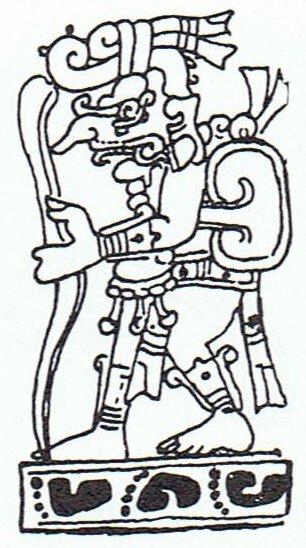 |
|
May 28 (148) |
29 (88 + 61) |
30 (*70) |
|
°May 24 (144) |
25 (*65) |
26 |
|
'May 1 (121) |
2
(*42) |
3 |
|
"April 17 (107) |
18 (*28) |
19 |
|
CLOSE TO THE FULL MOON: |
|
SEPT 24 (267) |
25 (*188) |
26 (84 + 185) |
|
HAN = ζ Ophiuchi
(251.0) |
ζ
Herculis,
η
Tr. Austr.
(252.1), η Herculis, β Apodis
(252.5) |
ATRIA
=
α
Tr. Austr.
(253.9) |
|
JULY 2 (183) |
83 |
SEPT 24 (267) |
 |
 |
|
11h (167.4)
χ Leonis, χ¹ Hydrae
(167.1), χ² Hydrae
(167.3)
*167.4 - *41.4 = *126.0 |
HAN = ζ Ophiuchi
(251.0) |
|
|
Nov 27 |
28 |
29 (333) |
|
°Nov 23 |
24 (*248) |
25 (329) |
|
'Oct 31 (*225) |
'Nov 1 |
2
(306) |
|
"Oct 17 (*210) |
18 |
19 (292) |
 |
... the Hawaiian staple, taro,
is the older brother of mankind, as indeed all
useful plants and animals are immanent forms of the
divine ancestors - so many kino lau or
'myriad bodies' of the gods. Moreover, to make root
crops accessible to man by cooking is precisely to
destroy what is divine in
them: their autonomous power, in the raw state, to
reproduce ...
|
2 he ngeti tea. |
3 he ngaatu. |
4 he tuitui koviro. |
5 he ketu anga mea. |
|
Gaatu, totora
reed. Vanaga. Gaatu 1.
Bulrush, reed. 2. (gatu).
Churchill.Gatu. Gaatu, totora
reed. Gatu: 1. To press, to
tighten, to squeeze. 2. To pack tight.
3. To pull suddenly, to give a jerk.
I ka hakarogo atu, ku eke á te kahi, he
gatu mai, as soon as he felt the
tuna be, he pulled in [the line] with a
sharp jerk. 4. To kick. 5. E gatu te
hagu, to wait for something
impatiently (gatu, breath). 6.
Shortly, very soon. He tu'u gatu,
he is coming shortly, he is just about
to arrive. Vanaga. Bulrush, reed.
Gaatu (gatu) 1. To feel of,
to pinch, to throttle with the hands, to
touch, to press (gaatu);
gatuga, pressure; gatugatu,
to trample down. T Mgv.: natu, to
press out linen, to squeeze a person or
a sore place. Mq.: natu, to
pinch. Ta.: natu, to pinch, to
bruise. 2. To suppurate. 3. Gatu mai
gatu atu, sodomy. Gatua (gatu
1), tractable, to press.
Churchill. Scirpus riparius var.
paschalis. Barthel 2.
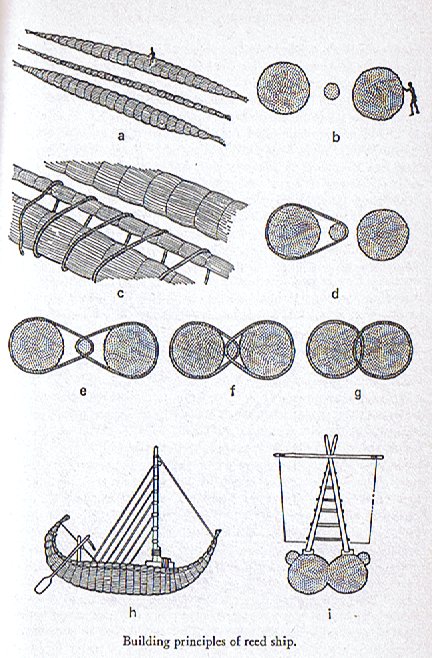
... All this, which in so many ways parallels
the normal imagery of the Old World culture-hero myths, telling
of the one who is gone, dwells underground in a happy, timeless
land, as lord of the realm of the happy dead, like Osiris,
but will rise again, we can read
without surprise. But what is surprising indeed was the manner
of Quetzalcoatl's actual return. The priests and
astrologers did not know in what cycle he was to reappear;
however, the name of the year within the cycle had been
predicted, of old, by Quetzalcoatl himself. Its sign was
'One Reed' (Ce Acatl), which, in the Mexican calendar, is
a year that occurs only once in every cycle of fifty-two. But
the year when Cortes arrived, with his company of fair-faced
companions and his standard, the cross, was precisely the year
'One Reed'. The myth of the dead and resurrected god had
circumnavigated the globe ... |
|
MARCH
28 |
29
(88) |
30 |
31
(*10) |
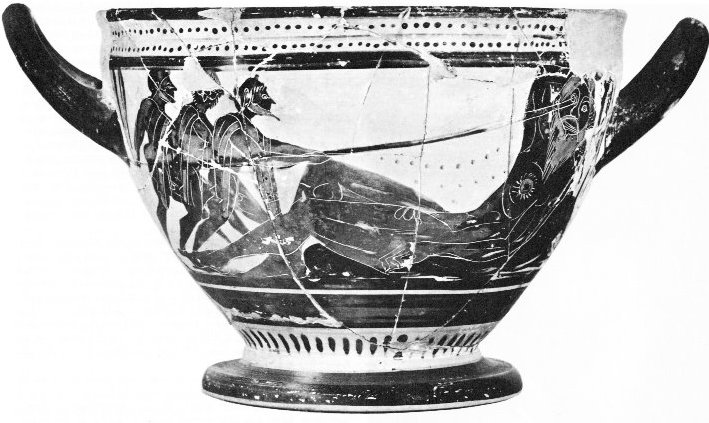
... 'Yes, for he was a monstrous thing
and fashioned marvelously, nor was he
like to any man that lives by bread, but
like a wooded peak of the towering
hills, which stands out apart and alone
from others.' Odysseus, choosing twelve
men, the best of the company, left his
ships at shore and sallied to the vast
cave. It was found stocked abundantly
with cheeses, flocks of lambs and kids
penned apart, milk pails, bowls of whey;
and when the company had entered and was
sitting to wait, expecting hospitality,
the owner came in, shepherding his
flocks. He bore a grievous weight of dry
wood, which he cast down with a din
inside the cave, so that in fear all
fled to hide. Lifting a huge doorstone,
such as two and
twenty good [maitaki] four-wheeled wains
could not have raised from the ground,
he set this against the mouth of the
cave, sat down, milked his ewes and
goats, and beneath each placed her
young, after which he kindled a fire and
spied his guests ... |
 |
 |
 |
 |
|
Ga1-7 |
Ga1-8 |
Ga1-9 |
Ga1-10 |
|
TABIT
=
π³
Orionis
(71.7),
π²
Orionis (71.9)
320 (South Pole star, Dramasa) - 71
(Tabit) = 249 (Antares) |
π4
Orionis (72.1),
ο¹
Orionis (72.4),
π5
Orionis (72.8)
*31.0 = *72.4 - *41.4 |
π¹
Orionis (73.0),
ο²
Orionis (73.4),
HASSALEH
=
ι
Aurigae
(73.6),
π6
Orionis (73.9)
*32.0 = *73.4 - *41.4 |
ALMAAZ (The Male Goat)
=
ε
Aurigae
(74.7),
HAEDUS I
=
ζ
Aurigae
(74.8) |
 |
|
May
31 |
June
1 (152) |
2
(*73) |
3 |
|
°May 27 |
28 (148) |
29 |
30 |
|
'May 4 |
5
(125) |
6
(*46) |
7 |
|
"April 20 |
21
(111) |
22
(*32) |
23 |
|
CLOSE TO THE FULL MOON: |
|
SEPT 27 (270 = 3 * 90) |
28 |
29 |
30 (*193) |
|
Tail-6 (Tiger)
WEI (Tail)
= ε Scorpii,
η Arae (254.3),
DENEBAKRAB
= μ Scorpii
(254.7) |
ι Ophiuchi (255.3), GRAFIAS
(Claws)
= ζ Scorpii
(255.4)
*214.0 = *255.4 - *41.4 |
κ Ophiuchi (256.2), ζ Arae (256.5), ε
Arae (256.8),
CUJAM (Club)
= ε Herculi
(256.9) |
no star listed (257) |
|
Nov
30 |
Dec 1 |
2 (4
* 84 = 336) |
3 |
|
°Nov
26 |
27 |
28 |
29
(333) |
|
'Nov
3 |
4 |
5 |
6
(310) |
|
"Oct
20 |
21
(*214) |
22
(295) |
23 |
 |
|
6 he ketu takarua. |
7 he teatea. |
8 he ngu haha tea. |
9 he mango. |
10 he hahara rapanui |
The taro
variant 9 he mango.
was presumably a verbal sign
corresponding to the glyph
type Metoro helped me name
mago - a sign of the
tail (end):
 |
180 |
 |
|
5 |
186 |
|
vaha mea |
mago |
|
182 days |
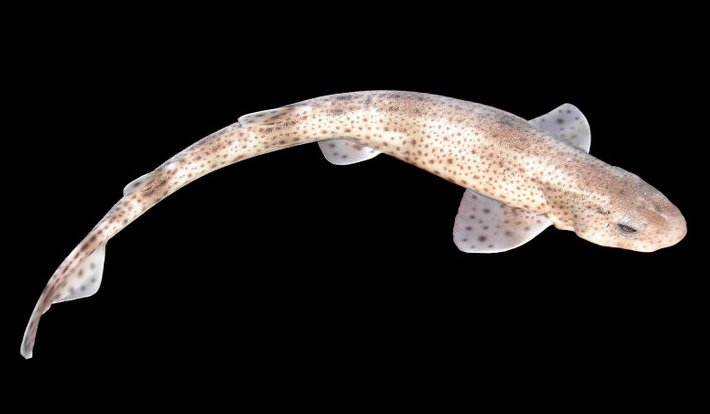
Hara.
Harahara 1. Misaligned (of
roofing, basketware, etc.); e
harahara nó te kete, the
basket is misaligned (its strips
are not parallel. 2. A sort of
taro. 3. Latrine, defecating
ground. Vanaga. 1. Pandanus. P
Mgv.: ara, puhara,
pandanus (tree); hara, a
bunch of pandanus fruit, old
pandanus. Mq.: faá haá,
pandanus. Ta.: fara, id.
2. Error, mistake, oversight,
wrong; to err, to confound, to
mistake; manau hara,
illusion; toua hara,
discussion without knowing the
object. P Mgv.: ara,
arara, defective, abortive,
to miss, to fail, a fault, a
quarrel; hara, a fault, a
mistake, an error, a dispute, a
quarrel, undisciplined. Mq.:
hara, a rake, libertine.
Ta.: hara, sin, fault,
crime. Churchill.
→ the name of the 10th taro
variant he hahara rapanui
had no final dot. |
|
APRIL 1 (59 + 32) |
2 |
3 (*13) |
4 |
5 (95) |
 |
 |
 |
 |
 |
|
Ga1-11 |
Ga1-12 |
Ga1-13 |
Ga1-14 |
Ga1-15 |
|
HAEDUS II
= η Aurigae
(75.9) |
5h (76.1)
ε
Leporis (76.0),
CURSA
(Footstool)
=
β
Eridani
(76.4),
λ
Eridani (76.7)
*35.0 = *76.4 - *41.4 |
μ Aurigae, μ Leporis (77.6) |
ĸ Leporis (78.0),
RIGEL
(Foot)
=
β
Orionis
(78.1),
Flaming Star = IC405
(78.2),
CAPELLA
=
α
Aurigae
(78.4),
ο
Columbae,
τ
Orionis (78.8)
*37.0 = *78.4 - *41.4
THUBAN (α Draconis)
|
λ Aurigae (79.0), λ Leporis
(79.6), ρ Aurigae (79.7)
ARCTURUS (α Bootis) |
 |
|
June 4 |
5 |
6 (157 = 314 / 2) |
7 (94 + 64) |
8 (*444) |
|
°May 31 (151) |
°June 1 |
2 (*73) |
3 (94 + 60) |
4 (*440) |
|
'May 8 (128) |
9 |
10 (*50) |
11 (94 + 37) |
12 (*52) |
|
"April 24 (114) |
Vaitu
Nui 25 (*35) |
26 (4 * 29) |
27 (94 + 23) |
28 (118 = 4 * 29) |
|
... The
Explorers had left their old
homeland in "April 25 (115) -
implying the synodic cycle of
Mercury - and they
had returned
half a year later, in "October
25 (298 = 115 + 183), which was
10 days after the arrival of the
Royal Double Canoe ...
... Ganz ähnlich is der Name
'Gott von Duazag' des
Gottes Nabū ... zu
erklären. Er
bezeichnet ihn als den Gott des
Wachtstums, welches als aus dem
Osten stammend betrachtet wird,
weil die Sonne, die das Wachstum
bringt, im Osten aufgeht.
Dass aber Nabū als
Ost-Gott aufgefasst wurde, hängt
damit zusammen, dass sein Stern,
der Mercur, nur im Osten oder
Westen sichtbar ist ...
 |
|
CLOSE TO THE FULL MOON: |
|
OCT 1 (91 + 183) |
2 (275) |
3 |
4 |
5 |
|
17h (258.7)
ARRAKIS = μ Draconis
(258.7) |
Mula-19 (The Root)
SABIK
(The Preceding One) =
η
Ophiuchi
(259.7),
η
Scorpii (259.9) |
NODUS I =
ζ
Draconis
(260.0),
π
Herculis (260.7),
RAS ALGETHI
=
α
Herculis
(260.8) |
SARIN =
δ
Herculis
(261.0),
ο
Ophiuchi (261.4)
*220.0 = *261.4 - *41.4
ALRISHA (α Piscium) |
ξ Ophiuchi (262.2), θ Ophiuchi,
ν Serpentis, ζ, ι Apodis
(262.4), ι Arae (262.8), ρ
Herculis (262.9)
*221.0 = *262.4 - *41.4 |
|
Dec 4 |
5 |
6 (*260) |
7 |
8 (342) |
|
°Nov 30 |
°Dec 1 (335) |
*(8 * 32) |
3 |
4 |
|
'Nov 7 |
8 (*232) |
9 |
10 (314) |
11 |
|
"Oct 24 |
Tangaroa Uri 25 |
26 |
27 (300) |
28 |
|
... Page E:86 tells about
Makoi being left behind on
Easter Island when the remaining
5 Explorers sailed home to
Hiva. From there (Tangaroa
Uri 25) to the day when Hotu
became worried about where Oto Uta was,
i.e. in Tangaroa Uri 30,
there were 5 days:
|
April
25 (115) |
5
+ 56 |
June
25 (176) |
5 +
116 |
Oct
25 (298) |
5
+ 56 |
Dec
25 (359) |
5 +
116 |
|
61 |
2 *
61 |
61 |
2 *
61 |
|
183 |
183 |
|
366 =
2 * 183 = 6 * 61 |
And from the autumn equinox
(265) at Antares to the Sting of
the Scorpion (υ
Scorpii) there were 15 days
...
 |
... In view of the almost
universal prevalence of the Pleiades year throughout
the Polynesian area it is surprising to find that in
the South Island and certain parts of the North
Island of New Zealand and in the neighboring Chatham
Islands, the year began with the new Moon after the
yearly morning rising, not of the Pleiades, but of
the star Rigel in Orion ...
|
 |
 |
|
hanau |
RIGEL & CAPELLA
|
Hanau. 1. Race, ethnic group. Hanau
eepe, the thick-set race; hanau momoko,
the slender race (these terms were mistranslated
as 'long-ears' and 'short-ears'). 2. To be born.
Hanau tama, pregnant woman; vî'e hanau
poki, midwive (also: vî'e hakaa'u).
Vanaga. To be born; vie hanau,
midwife. P Pau.: fanauga, child,
descendant, progeny. Mgv.: hanau, to be
born, to be brought into the world. Mq.:
fanau, hanau, to be born, to lie in,
to bring into the world. Ta.: fanau, to
be born, to lie in. Churchill.
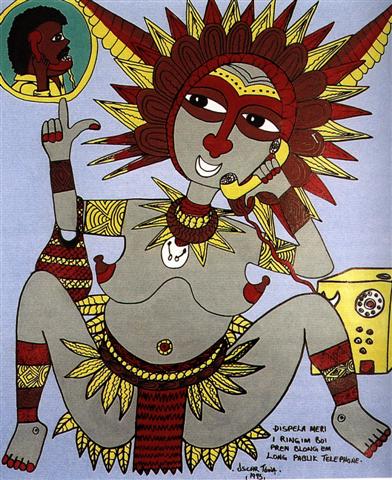
... In A Girl Rings her Boyfriend, a woman
who wears traditional dress, including a fiber apron
and feather headdress, uses a payphone to talk with
her boyfriend. Closer examination reveals her
polished nails and a bag that looks like a striped
bilum but is worn like a Western-style
handbag, signs of her boldness that are just as
obvious as placing a telephone call to a man. The
displayed posture in which she sits, often used to
depict female ancestors as images of fecundity and
prosperity, seems incongrous, perhaps underscoring
Towa's perception of the inappropriateness of her
behavior ... (The artist Oscar Towa is from Papua
New Guinea and the quotation from D'Alleva.)
|
